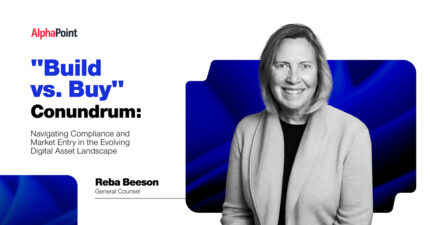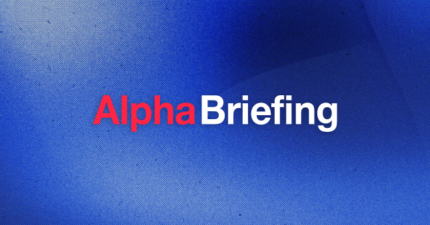The 8 Biggest Benefits Of Tokenized Assets
The tremendous growth of cryptocurrencies like Bitcoin (BTC) and Ethereum (ETH) has led many financial institutions to consider the importance of blockchain-based assets. One of the most promising blockchain technologies is asset tokenization.
Asset tokenization involves storing an asset’s ownership record over a blockchain network. Real-world assets (RWAs) like real estate and art can be tokenized to encourage investors to engage with the digital crypto market.
In this guide, we’ll explore the eight compelling benefits that are drawing more financial institutions to asset tokenization.
What Is Asset Tokenization?
Asset tokenization is the process of digitizing an asset on a blockchain network. Essentially, this process involves recording the ownership rights of an asset on a blockchain so it can be bought, sold, and traded.
You can convert virtually any asset into a token, including tangible assets like real estate and intangible assets like stocks and bonds. Turning RWAs into digital tokens using an asset tokenization platform makes them easily divisible.
This means that investors can pursue fractional ownership of digital assets, which would be impossible for some assets like physical artwork. With the allure of fractional ownership, assets can attract more investors and stimulate worldwide financial markets.
Asset tokenization can also lead to peer-to-peer (P2P) trading of traditional assets without the presence of middlemen. As a result, tokenized assets can bring greater security and flexibility to financial markets.
Here are some notable examples of asset tokenization:
- Real-world tokenized assets: RWAs like artwork, fiat currencies, intellectual properties (IPs), and stocks can be stored on a blockchain. These assets are digitized into a record of ownership that’s similar to a house deed.
- Digital tokenized assets: RWAs aren’t the only assets that can be tokenized. Digital assets can be tokenized on Web3 environments. For example, cross-chain assets and decentralized autonomous organization (DAO) rights can be stored on a blockchain to give the holder outright ownership instead of a claim.
- In-game tokenized assets: In-game assets in metaverses and GameFi can be represented as tokenized assets. These include weapons, skins, and in-game currencies.
Tokenized assets can play an integral role in all kinds of financial systems, both in the real world and the Web3 ecosystem.
What Are the Benefits of Tokenized Assets?
Tokenized assets can deliver many benefits to banks and financial organizations. Let’s explore the benefits of tokenization at scale.
1. Enhanced Liquidity
Tokenization can transform traditionally illiquid assets. Generally speaking, tokenized assets allow fractional ownership. This means that investors can purchase specific fractions of a whole asset.
As a result, illiquid assets can gradually convert to cash and entice more investors to purchase. Some of the most illiquid assets are:
-
- Art and antiques: Both are very difficult to appraise and appeal to niche buyer markets, so they are difficult assets to sell.
- Private company interests: Unlike stocks, private company interests aren’t valuable commodities. It’s difficult to determine their value, and smaller companies can go bankrupt without any remuneration for investors.
- Collectibles: Collectibles also appeal to a niche audience. The monetary value of these assets can vary depending on the appraiser.
- Real estate: Depending on the market, it can be challenging to sell some types of real estate. Tough markets, lengthy closing periods, and recessions can keep real estate unoccupied for years.
Through asset tokenization, illiquid assets can bring more liquidity to their respective markets. For example, if a property owner hasn’t had luck selling a vacation home in the Bahamas, they could convert the asset into hundreds of tokens.
This way, both new and experienced real estate investors can purchase these tokens and expand their portfolios with little risk.
2. Global Accessibility
Tokenized assets can also create global accessibility for all commerce and trade. Digital tokens break down the geographical and regulatory barriers to traditional investments, which can help widen global investor pools.
Regarding global accessibility, tokenized assets can especially benefit two main asset classes: real estate and fine art. Historically, only the ultra-wealthy could purchase real estate in foreign markets.
These transactions were complicated, especially considering the tax laws and currencies of other countries. By tokenizing foreign real estate, investors from all over the world can participate in these markets. This exposure can stimulate local and national economies and break the high entry barrier of foreign real estate investing.
These same advantages apply to fine art. In past years, only one person or entity could purchase a piece of art. After all, dissecting a piece of art without ruining its value is impossible.
Asset tokenization makes it possible to fractionate artwork into multiple shares. As a result, local and foreign investors can buy shares and add more liquidity to the fine art market.
Art collectors are already exploring the benefits of asset tokenization. Recently, Freeport, a blockchain-based fine art investment platform, digitized a few of Andy Warhol’s famous artworks and offered them as tokenized investments on the Ethereum blockchain.
3. Transparency and Security
Tokenized assets are established using a blockchain network. A blockchain is a public, immutable, and distributed ledger that records all financial transactions and protects them from changes or alterations from outside forces.
The blockchain is also decentralized, meaning that no individual or entity owns it. There are multiple nodes that process and verify transactions before adding them to the blockchain.
As more transactions occur, they link to other blocks through cryptographic hashes. This technology makes it impossible to alter and tamper with transaction data, which is essential in safeguarding financial instruments and eliminating money laundering.
Blockchain technology adds an impenetrable layer of protection for tokenized assets. It ensures that threat actors and cybercriminals can’t tamper with assets and provides an accurate record of ownership. So tokenized assets offer unparalleled transparency and security to prospective investors.
4. Composability
In the crypto space, composability refers to the ability to combine different blockchain-based assets to create newer and more complex applications. Think of this process as adding a stack of Lego blocks to another stack.
Composability provides unlimited possibilities for building innovative financial applications, services, and products.
For example, with crypto composability, a financial organization can use an Ethereum stablecoin as collateral to mint several security tokens on another blockchain, like Binance Smart Chain (BSC). Then they can use these new combined assets as liquidity on a decentralized finance (DeFi) exchange.
Here is how composability can have a worldwide impact:
- Financial inclusion: By providing access to a wide array of financial tools through smartphone access, composability can deliver critical financial services to underbanked populations.
- Rampant innovation: Composability involves integrating different blockchain-based assets to create more dynamic financial solutions. The result is increased democratization and competition in the financial sector.
- Worldwide reach: Composability isn’t limited to geographical barriers — businesses and individuals around the world can leverage it.
Ultimately, financial organizations can utilize composability to innovate tokenized assets and make them globally accessible.
5. Opening New Investment Opportunities
Asset tokenization involves converting virtually any commodity into a digital asset. This paradigm shift will undoubtedly open new investment opportunities in the future. One such opportunity is the growing popularity of non-fungible tokens (NFTs).
NFTs are the digital representation of an RWA, such as artwork, media, and digital content. An NFT is created by storing an asset’s metadata on a blockchain using cutting-edge encryption.
NFT owners receive a unique identification code as proof of ownership. NFTs are popular investment vehicles because they exist on a blockchain and offer opportunities to beginner investors.
The illustrious NFT “The Merge” sold for $91.8 million in 2021. It remains the most expensive NFT of all time. What’s more, approximately 28,983 collectors purchased a share of the NFT, which held a starting share price of $575. In under a month, investors bought over $90 million in tokens.
“The Merge” achieved the highest recorded purchase price for artwork made by a living artist, and it’s not the only popular NFT on the market.
As NFTs continue to grow in monetary value and acclaim, more financial organizations are realizing how utilizing tokenized assets can draw a diverse investor pool.
6. Cost Efficiency
Asset tokenization relies on blockchain technology to reduce transaction and asset management costs. A blockchain doesn’t require middlemen, clearinghouses, or other intermediaries to process transactions.
As a result, investors can avoid the hefty transaction fees traditional assets are subject to. In addition, processing times are faster for tokenized assets since the transactions don’t have to cycle through several intermediaries like traditional assets do.
Not only are tokenized assets more cost-effective than traditional assets, but they’re also more efficient in regard to scale distribution. All tokenized assets operate autonomously via smart contracts.
A smart contract is a transaction protocol that executes automatically according to an agreement’s conditions. These contracts operate based on if-then logic. For instance, a smart contract can be executed when a customer pays for an item, triggering an automatic shipment from the manufacturer.
Hence, smart contracts play a crucial role in streamlining transaction processes by managing both the transfer and ownership of tokenized assets. This ensures that the transfer process is both efficient and transparent.
7. Streamlined Payments and Settlement Processes
It’s no secret that blockchain transactions are significantly faster than traditional bank transactions. Again, blockchain doesn’t use intermediaries, which means transactions normally process within a few minutes — or even as fast as three to five seconds.
On the other hand, traditional bank transfer times can vary. If a person wants to send money to a relative overseas, it could take up to three business days or longer.
Also, the incorporation of smart contracts completely automates the settlement process. Simply put, the agreement terms between the buyer and seller are written into the smart contract of a digital asset. Once the transaction is complete, the smart contract executes in real time.
8. Simplified Compliance and KYC Processes
Asset tokenization can help a financial organization maintain rigid compliance with legal frameworks in its jurisdiction. Tokenized assets can simplify compliance with regulatory requirements and improve the efficiency of Know Your Customer (KYC) verification processes. They can also efficiently ensure that all transactions meet legal standards.
The key to actualizing these advantages is leveraging smart contract automation. Smart contracts can automatically enforce legal compliance, removing the human margin of error, promoting buyer confidence, and reducing legal liabilities.
For example, a smart contract can include a country’s financial regulatory requirements in its logic, ensuring that all transactions comply with standards like:
- Investor accreditations
- Trading restrictions
- Anti-money laundering (AML) requirements
- KYC procedures
Once these rules are defined, they can be translated into code for the smart contract to interpret and enforce. If a security token is only available in specific countries, the smart contract will verify the buyer’s location before completing the transaction.
Overall, smart contracts can keep financial organizations compliant and buyers safe from illegal financial activities.
Tokenize Your Assets With Alphapoint
Asset tokenization has numerous use cases and provides several impactful benefits for organizations and investors everywhere. Digitizing real-world assets expands global investing opportunities, improves financial transparency, and streamlines transactions.
Ready to attract a deeper investor pool to your business? AlphaPoint can help. Our asset digitization software helps financial institutions:
- Create cryptocurrencies, security tokens, and other digital assets
- Access new capital opportunities, such as commodities, real estate, luxury goods, and private company shares
- Deploy smart contracts and rapid token issuance
Our technology has been battle-tested across more than 35 countries. World governments and financial providers alike trust AlphaPoint to add dynamic crypto solutions to their repertoire.
See what asset tokenization can do for your business — request an AlphaPoint demo today.
About the author
Igor Telyatnikov, Co-Founder & CEO of AlphaPoint, leads its white-label digital platform, powering global crypto marketplaces with over 20 years of expertise in financial technology and innovation. Connect with him on LinkedIn.


